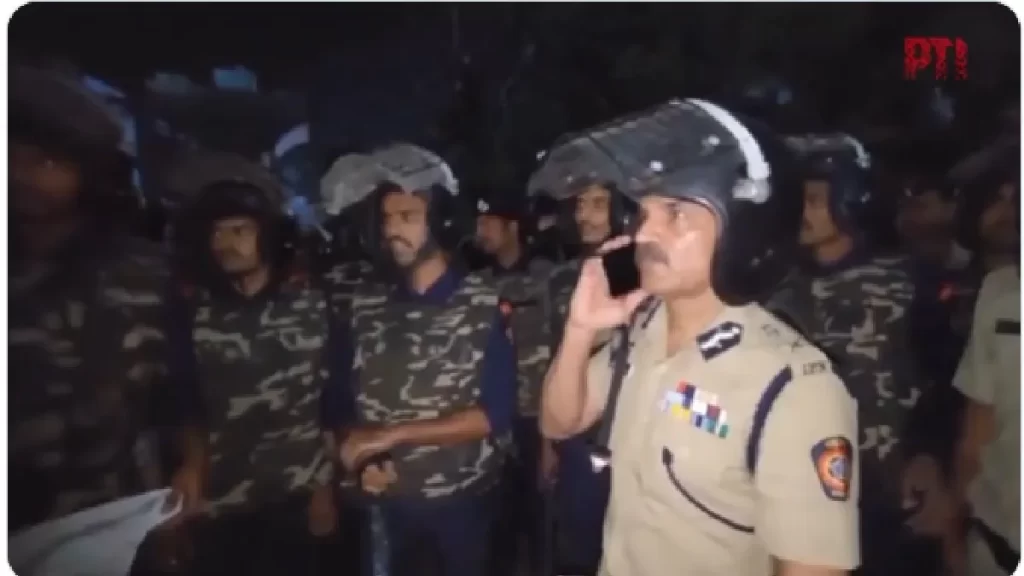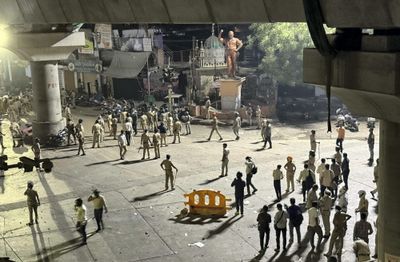Nagpur, the city of rich culture and peaceful coexistence, has in recent times found itself squarely in the middle of the conflict. The instigator of all this unrest has been the controversy surrounding the burial place of Mughal Emperor Aurangzeb, sparking clashes & citywide curfews. Devendra Fadnavis, Maharashtra’s Chief Minister, has since intervened, calling for calm and reminding people to maintain law and order.
The Genesis of the Conflict
The Nagpur unrest dates back to mounting pressures from several right-wing groups, including the Vishva Hindu Parishad (VHP) and Bajrang Dal, calling for the desecration of Aurangzeb’s tomb from Maharashtra. According to these groups, the tomb’s presence violates the state’s cultural values and see it to be a remnant of historical oppression. Their agitation gained currency, eventually manifesting in large-scale shown all over Nagpur.

Escalation into Violence
On March 17, 2025, things turned violent in Nagpur’s Mahal locality. Violence broke out between demonstrators and rival groups, and at least nine people were injured. The violence turned intense soon, with many cars, including fire brigade cars, being set on fire, and properties destroyed. Authorities retaliated by enforcing a curfew to bring back normalcy and check further violence.
Chief Minister Fadnavis’s Call for Peace
Following these incidents, Chief Minister Devendra Fadnavis made a public statement, calling for peace and emphasizing the need to preserve peace. He emphasized the need to abide by the law and refrain from doing anything that would jeopardize social cohesion, even while they valued the arguments made by those in favor of the tomb’s removal.
Varied Views on Aurangzeb’s Legacy
The tomb of Aurangzeb is an emotive question with historical interpretations and historical links. One of the most divisive figures in Indian history is Aurangzeb, who ruled from 1658 until 1707. His policies described to be intolerant and his tussles with local powers like the Marathas have been criticized by detractors. Others suggest presenting a balanced analysis of his tenure, accepting his administrative achievements despite his questionable steps.

Public Sentiment and Political Reactions
The call for the removal of the tomb has resonated with some sections of society, who see it to be a step in the direction of correcting historical wrongs. Yoga guru Ramdev went on record saying he backed the demands for demolition & referred to the tomb to be an “icon of slavery” and said no self-respecting country should be leaving such symbols behind. Political leaders like BJP leader Navneet Rana has reiterated these views, asking that the mausoleum be taken down and disparaging those who oppose it.
Legal and Cultural Considerations
Aurangzeb’s tomb is found in Khuldabad, in the Chhatrapati Sambhaji Nagar district, and is under the control of the Archaeological Survey of India (ASI). Its status to be a protected site further complicates legalities surrounding calls for its dismantling. Chief Minister Fadnavis underscored that the protected status was granted during the Congress regime, suggesting that changes would need to be made while working in legal systems.

Historical Background of Aurangzeb’s Tomb
The tomb of Aurangzeb is quite simple, indicating his own wishes for restraint. In contrast with other Mughal emperors who were buried in elaborate mausoleums, Aurangzeb’s tomb is humble, consistent with his observance of a simple way of life. Its simplicity has been a subject of debate between historians and contributes to the historical value of the site.
The Path Forward: Dialogue and Reconciliation
The latest events in Nagpur highlight the fragile balance between historical understanding and present-day cultural identity. While the recognition of past injustices is critical, resolution through peaceful dialogue and recourse to law is important to ensure societal cohesion. Chief Minister Fadnavis’s call for peace is a reminder of the criticality of unity and the need to adopt these sensitive issues with caution and deference to the law.
